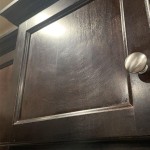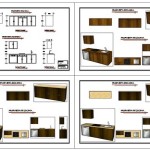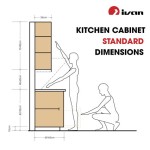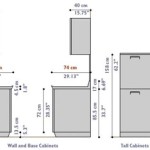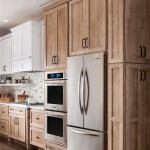Victorian Kitchen Door Handles: A Study in Style and Function
The Victorian era, spanning from 1837 to 1901, was a period of significant transformation and innovation, influencing all aspects of life, including interior design. The kitchen, once a purely functional space, began to evolve during this time, incorporating aesthetic elements that reflected the burgeoning middle class' desire for comfortable and stylish homes. Kitchen door handles, though seemingly minor details, played a pivotal role in this transformation, embodying both practicality and the artistic sensibilities of the age.
Understanding Victorian kitchen door handles requires appreciating the broader context of Victorian design. The era was characterized by a fascination with ornamentation, eclecticism, and a revival of historical styles. Gothic, Renaissance, and Rococo influences were common, often blended in unexpected and elaborate ways. This emphasis on decoration extended to even the most utilitarian objects, elevating them beyond mere functionality. Materials also played a crucial role, with brass, bronze, iron, and occasionally porcelain dominating the landscape of door handle design.
Furthermore, the Industrial Revolution significantly impacted the availability and affordability of these decorative elements. Mass production techniques allowed manufacturers to create intricately detailed handles at a scale previously unimaginable, making them accessible to a wider range of homeowners. This democratization of design contributed to the widespread adoption of Victorian styles in kitchens across various social strata.
Material Choices: Reflecting Affluence and Functionality
The selection of materials for Victorian kitchen door handles was not arbitrary; it reflected both the homeowner's social standing and the practical requirements of a busy kitchen environment. Brass was a particularly popular choice, prized for its warm golden hue, durability, and resistance to corrosion. Brass handles were often highly polished to maintain their luster, adding a touch of elegance to the kitchen cabinets.
Bronze, another commonly used metal, offered a more subdued and antique appearance. Its darker, richer tones were often favoured for kitchens striving for a more rustic or traditional aesthetic. Bronze handles were generally more resistant to tarnishing than brass, requiring less frequent polishing.
Iron, while less ornate than brass or bronze, was a sturdy and cost-effective option, particularly for kitchens in more modest homes. Iron handles were often finished with a black or painted coating to prevent rust and provide a more visually appealing surface. These handles, while practical, still often incorporated decorative elements, reflecting the pervasive Victorian desire for ornamentation.
Porcelain, though less commonly used for the entire handle, was frequently incorporated as an accent material, particularly in the form of porcelain knobs or inlays. White porcelain provided a clean and hygienic surface, ideal for a kitchen environment, while coloured porcelain added a touch of visual flair. Porcelain handles were generally more delicate than metal handles and required more careful handling to prevent chipping or breakage.
Design Variations: A Reflection of Evolving Aesthetic Tastes
The design of Victorian kitchen door handles encompassed a wide range of styles, reflecting the diverse aesthetic influences of the era. Lever handles, particularly those with curved or scrolled designs, were a common choice, offering a comfortable and ergonomic grip. These handles often featured intricate detailing, such as floral motifs, geometric patterns, or depictions of animals.
Knob handles, another popular option, came in various shapes and sizes, ranging from simple round knobs to more elaborate faceted or fluted designs. These knobs were often made of brass, bronze, or porcelain and were frequently adorned with decorative details.
Pull handles, designed for larger or heavier kitchen drawers and cabinets, were typically made of iron or brass and featured a sturdy construction. These handles often incorporated decorative elements, such as backplates or ornamental finials, to enhance their visual appeal.
Furthermore, the style of the handle often correlated with the overall design of the kitchen. Kitchens designed in the Gothic Revival style, for example, might feature door handles with pointed arches, trefoil motifs, and other architectural details reminiscent of medieval cathedrals. Renaissance Revival kitchens, on the other hand, might incorporate handles with classical motifs, such as acanthus leaves, scrolls, and egg-and-dart patterns.
The use of stamped or cast designs allowed for a degree of mass customization, enabling homeowners to select handles that complemented their existing cabinetry and overall kitchen design scheme. Catalogues from hardware manufacturers showcased a vast array of options, empowering homeowners to personalize their kitchens with these seemingly small, but impactful, details.
Installation and Maintenance: Ensuring Longevity and Functionality
The installation of Victorian kitchen door handles was typically a straightforward process, involving the use of screws to secure the handle to the cabinet door or drawer front. The precise method of installation, however, varied depending on the type of handle and the thickness of the cabinet door. Professional tradesmen were frequently employed to ensure a secure and aesthetically pleasing installation.
Maintaining the appearance and functionality of Victorian kitchen door handles required regular cleaning and polishing. Brass and bronze handles were particularly prone to tarnishing and required frequent polishing with specialized metal polishes to maintain their luster. Iron handles, if painted or coated, might require periodic repainting to prevent rust and maintain a uniform finish.
The cleaning process typically involved removing any dirt or grime with a mild soap and water solution, followed by polishing with a soft cloth. Abrasive cleaners were generally avoided, as they could scratch or damage the surface of the handle. For heavily tarnished handles, more aggressive polishing compounds might be necessary.
Proper maintenance not only preserved the aesthetic appeal of the door handles but also ensured their longevity and functionality. Loose screws were tightened regularly, and any damaged or broken components were promptly replaced. This attention to detail helped to prolong the lifespan of these valuable kitchen artifacts, allowing them to be enjoyed for generations to come.
In conclusion, Victorian kitchen door handles represent more than just functional hardware; they embody the artistic sensibilities, technological advancements, and social aspirations of a transformative era. Their material choices, design variations, and installation and maintenance practices provide valuable insights into the lives and values of the people who inhabited these spaces. Studying these seemingly minor details offers a deeper understanding of the rich and complex tapestry of Victorian life.

Victorian Cabinet Knobs Kitchen Cupboards Drawer Pull Knob

Victorian Cast Iron Cup Pull Handles Knobs Black Rustic

Buy Solid Brass Cabinet Knobs Round Cup Pulls Bee

Solid Polished Brass Victorian Style Bedroom Cabinet Knobs

Victorian Cupboard Knob

Polished Chrome Finish Victorian Style Kitchen Cabinet Door Knobs

Victorian Cupboard Knob M47aab At Simply Door Handles

A Brief History Of Cabinet Hardware Mockett

Antique Brass Victorian Cabinet Knob Cabinets Knobs Kitchen Cupboard

Polished Chrome Victorian Cupboard Knobs 42mm
Related Posts


